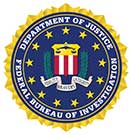|

 |
FBI Releases
2013 Hate Crime Statistics
December 08, 2014
Today, the FBI released Hate Crime Statistics, 2013, the Uniform Crime
Reporting (UCR) Program’s first publication to present data collected
under the Matthew Shepard and James Byrd, Jr. Hate Crime Prevention Act
of 2009. Accordingly, the bias categories of gender (male and female)
and gender identity (transgender and gender nonconforming) have been
added to the other bias categories of race, religion, disability,
sexual orientation, and ethnicity.
Other new aspects of the report include the presentation of age
categories to indicate whether hate crimes were committed by or
directed toward juveniles. In addition, the data for the 2013 report
were collected and published in accordance with the U.S. Government,
Office of Management and Budget’s revised categories for race and
ethnicity, as well as the FBI UCR Program’s revised definition of rape
in the Summary Reporting System.
Hate Crime Statistics, 2013 includes data about the offenses, victims,
offenders, and locations of the bias-motivated incidents reported by
law enforcement agencies throughout the nation. However, the UCR
Program does not estimate offenses for the jurisdictions of agencies
that do not submit reports. Highlights of Hate Crime Statistics, 2013
follow.
Law enforcement agencies reported 5,928 criminal
incidents involving 6,933 offenses as being motivated by a bias toward
a particular race, gender, gender identity, religion, disability,
sexual orientation, or ethnicity in 2013.
There were 5,922 single-bias incidents involving
7,230 victims. A percent distribution of victims by bias type showed
that 49.3 percent of victims were targeted because of the offenders’
racial bias, 20.2 percent were victimized because of the offenders’
sexual-orientation bias, 16.9 percent were targeted because of the
offenders’ religious bias, and 11.4 percent were victimized due to
ethnicity bias. Victims targeted because of the offenders’ bias against
disabilities accounted for 1.4 percent of victims of single-bias
incidents; gender identity, 0.5 percent; and gender, 0.4 percent.
There were 6 multiple-bias hate crime incidents
involving 12 victims.
Of the 4,430 hate crime offenses classified as
crimes against persons in 2013, intimidation accounted for 43.5
percent, simple assault accounted for 38.8 percent, and aggravated
assault for 16.6 percent. Five murders and 21 rapes (15 from agencies
that collected data using the revised rape definition and 6 from
agencies that used the legacy definition) were reported as hate crimes.
Beginning with the 2013 data
collection, the UCR Program’s revised definition of rape is
“Penetration, no matter how slight, of the vagina or anus with any body
part or object, or oral penetration by a sex organ of another person,
without the consent of the victim.”
The legacy UCR definition of
rape is “The carnal knowledge of a female forcibly and against her
will.”
There were 2,424 hate crime offenses classified as
crimes against property. The majority of these (73.6 percent) were acts
of destruction/damage/vandalism. Robbery, burglary, larceny-theft,
motor vehicle theft, arson, and other offenses accounted for the
remaining 26.4 percent of crimes against property.
In the UCR Program, the term known offender does not
imply that the suspect’s identity is known; rather, the term indicates
that some aspect of the suspect was identified, thus distinguishing the
suspect from an unknown offender. Law enforcement agencies specify the
number of offenders and, when possible, the race of the offender or
offenders as a group. Beginning in 2013, law enforcement officers could
also report whether suspects were juveniles or adults, as well as the
suspect’s ethnicity when possible.
Of the 5,814 known
offenders, 52.4 percent were white, and 24.3 percent were black or
African American. The race was unknown for 14.8 percent. Other races
accounted for the remaining known offenders: 0.8 percent were American
Indian or Alaska Native; 0.7 percent were Asian; 0.1 percent were
Native Hawaiian or other Pacific Islander; and 7.0 percent were of a
group of multiple races.
Of the 2,527 offenders for
whom ages were known, 68.0 percent were 18 years of age or older.
Of the 368 offenders for
whom ethnicity was reported, 54.1 percent were not Hispanic or Latino,
6.3 percent were in a group of multiple ethnicities, and 3.3 percent
were Hispanic or Latino. Ethnicity was unknown for 36.4 percent of
these offenders.
Most hate crime incidents (31.5 percent) occurred in
or near residences/homes. More than 18 percent (18.1) occurred on
highways/roads/alleys/streets/sidewalks; 8.3 percent occurred at
schools/colleges; 5.7 percent happened at parking/drop lots/garages;
and 3.5 percent took place in churches/synagogues/temples/mosques. The
location was considered other/unknown for 13.2 percent of hate crime
incidents. The remainder of hate crime incidents took place at other
specified or multiple locations.
|
|
|
|

